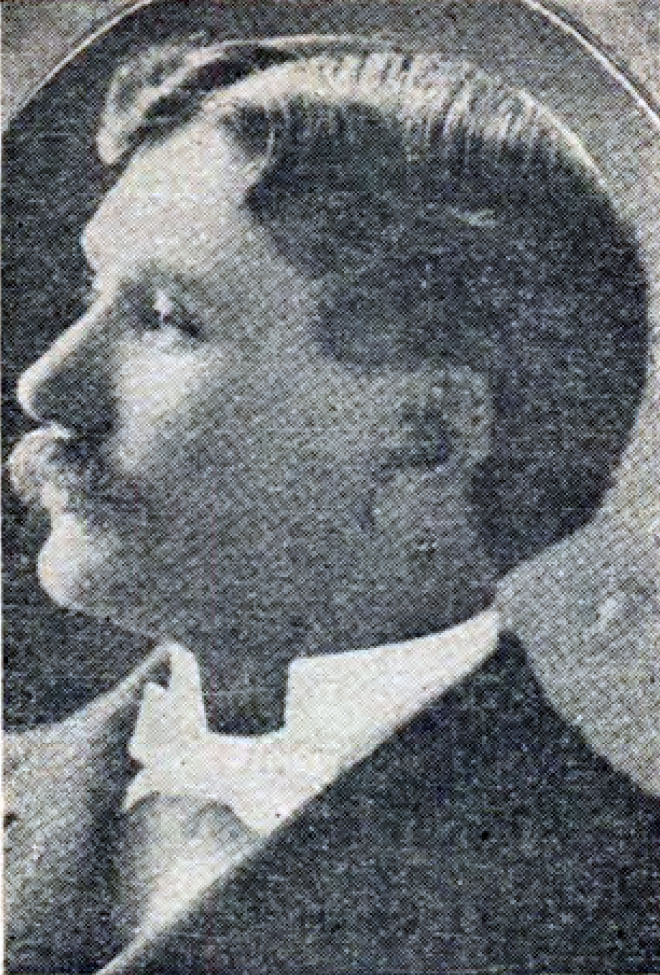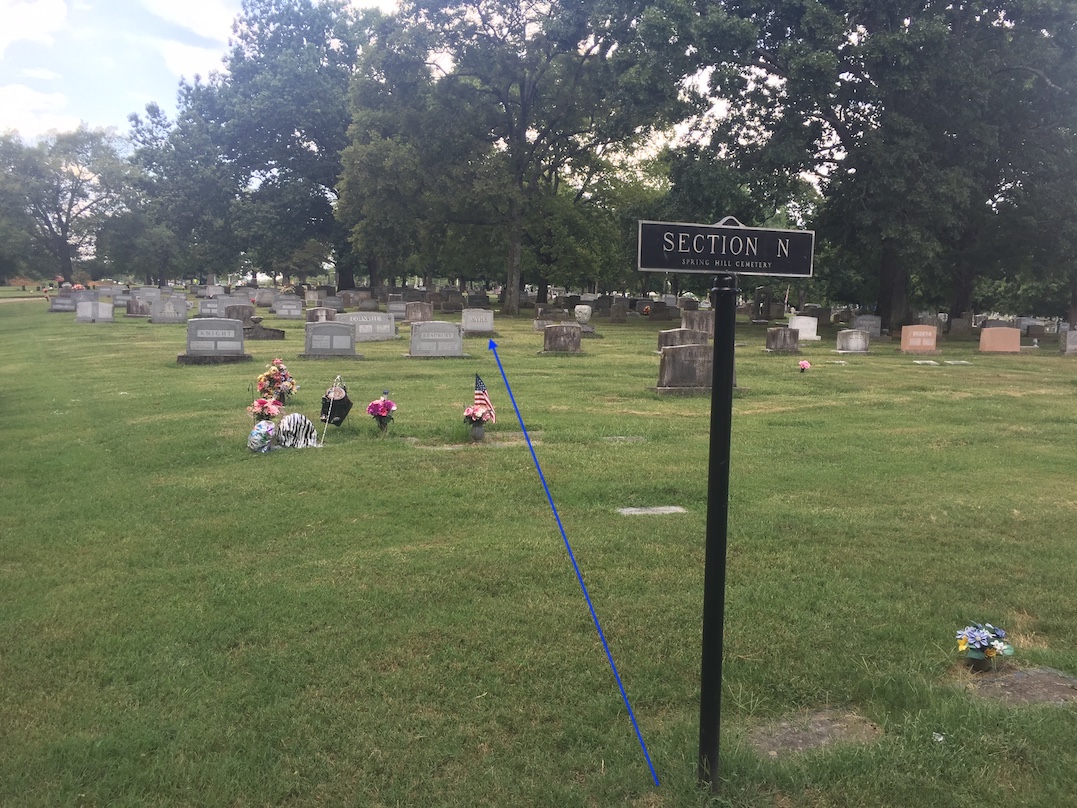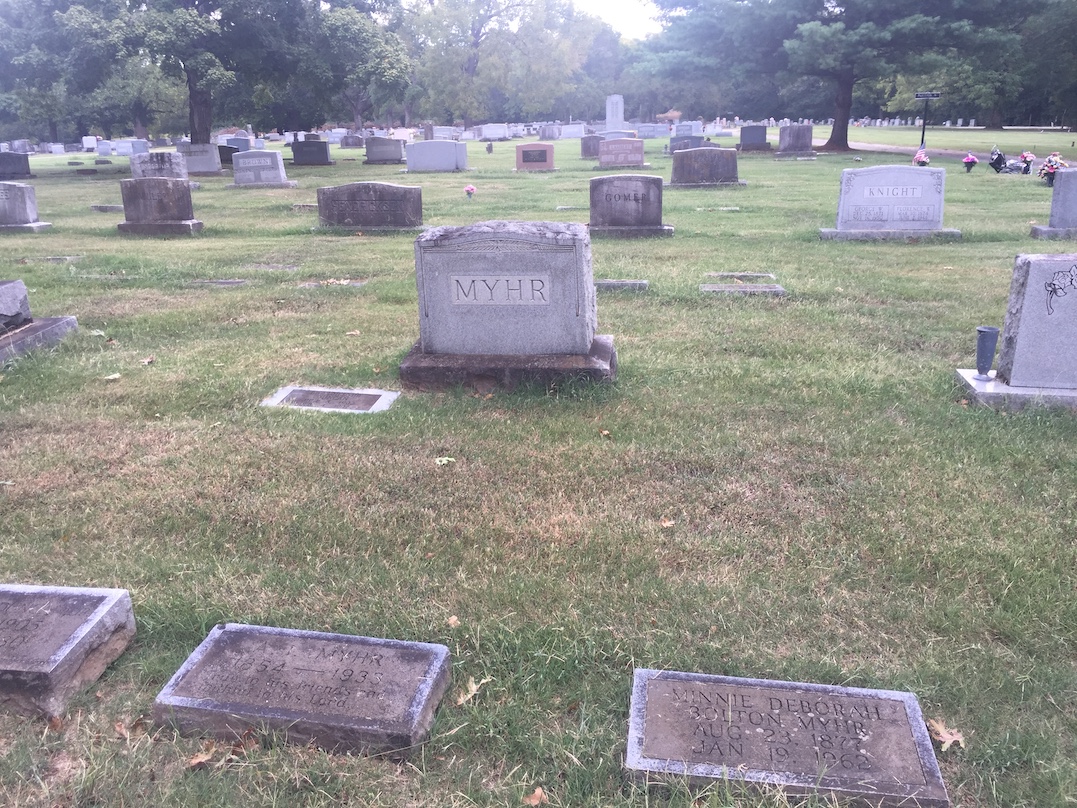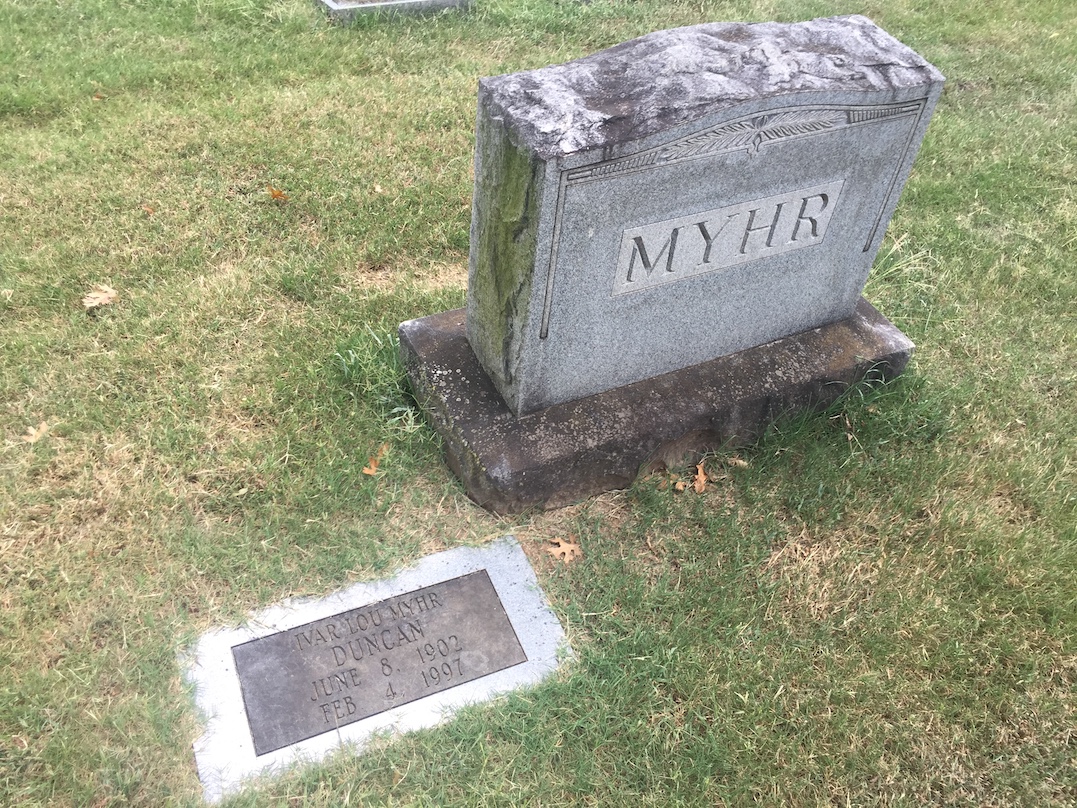Andres Ivarson "A.I." Myhr
1855-1933
![]()
The Life Of A.I. Myhr
A. I. Myhr, and that is always the way he signed his name, which in full was Andres Ivarson Myhr, Christian statesman, minister evangelist, thinker, philosopher, student of men and affairs, and true citizen of the old U. S. A., was no hyphenated American. Yet he always felt a tender reverence for his native Bergan with her houses of stucco and wood painted in red and yellows, monument to King Olaf, and its picturesque surrounding landscape of mountains and seas in Norway. This native town of Edvard Grieg and Ole Bull was to be known to thousands for other reasons than these. Yet, I do not refer to the Vestlandske fishery, extensive quays, fishing smacks and timber ships gliding before the Tory (market place), nor yet to Bergenhus, Fredriksburg, Sverresborg and other old forts. There stands her ancient cathedral rebuilt in the 16th century, the Romanesque nave of Mariae Kirke, together with her galleries and museums and the Rasmus Meyer collection of Norwegian paintings and furniture which would be of more than passing interest, but these are to be crowded out of this verbal sketch because in May, 1871, a boy in his teens leaving home and friends came to America, and coming, caught a vision.
This Norwegian lad, nurtured and confirmed in the national-Lutheran church, began work on a Kansas Railroad, remained awhile in Illinois, and then on into Missouri, breathed deeply into his lungs this air of freedom, and felt a new stimulus to his brain and heart, as men like W. H. Embry and ''Brother Risk,'' as he called him, placed before his youthful mind thought-patterns of religion, which until then were unknown to Myhr, yet they were as old as the Apostles and Pentecost. As A. I. Myhr passed through the common schools of Norway and through the schools of Missouri, he had been thinking, Over here, he soon thought his way out of denominationalism, and into the glorious freedom in Christ and took a definite, obedient position under his Lord, April, 1875, and from that day forward the New Testament church had no more loyal members, nor the truth in Christ a more constistent, zealous and effective advocate.
The writer is attempting to pass on to you and future generations a few facts concerning the subject of this brief sketch gathered after a knowledge of Brother Myhr covering more than forty years, in my home church at Hale's Chapel, Washington County, Tennessee, in my parents home, in my own home, in his home, in conventions, and to catch anew his spirit, I this week have re-read thrice, forty-nine of his letters to me, dating from 1905, and a questionnaire of thirty questions prepared by the writer and filled in and signed by his own hand, mailed to me only a little while before he fell on sleep, April 13, 1933. Your servant had entreated him many times to prepare a volume of his sermons, but to no avail, and he wanted to preserve a few of the salient facts of his life as a matter of record.
From the beginning, in America, unafraid of work, Myhr engaged in common labor to make possible his educational pursuits. With Paul, he might have said, "Working with my own hands." Being of an exceedingly active nature, A. I. Myhr immediately entered, heart and soul, into Christian activity. To him then, and ever afterwards, the "Cause," as he so often expressed it, meant everything. " Know ye not that I must be about my Father's business?"
But he thought it folly to waste time trying to chop with a dull axe. He believed in efficiency. He believed that when Almighty God called men that they were already equipped or that he equipped them. People talk about the Twelve being uneducated. It is true that they had attended no Princeton, Yale or Oxford, but they had been in the school of Christ. Garfield once said that the ideal college was a log with a student on one side and Mark Hopkins on the other. So these had been with Jesus.
Believing in the training, Feb. 7, 1878, young Myhr entered Christian University, now Culver-Stockton College. Here he came under the influence of men like Dr. W. H. Hopson, Dr. R. Lin Cave, J. C. Reynolds, J. H. Carter and B. D. Dungan. Here he was associated with such students as Dr. E. L. Powell, B. D. Gillespie and Chas. Collins. By close application to study, teaching and preaching the while, brought the young man to June, 1883, not only as graduate, but as valedictorian of his class.
Other honors came, and he was invited to become pastor of the church in Glasgow, Mo. where he served during 1883-1884 when he was elected Sunday School evangelist for Missouri, serving in this position from 1884-1887. From 1888-1889 he ministered to the church in Smithville, Mount Gilead, Kearney and Antioch, Mo. But it was to Tennessee that he gave the best of his life-those mature years which a rich background of experience, training, association and culture. Who ever heard him speak ten minutes without hearing one of his "pet sayings," as "When I was back in Missouri?" Many of his fine illustrations were drawn from experience in Missouri.
Those twenty years, 1890-1910, marked the heart and strength of his ministry. He at once organized the Tennessee State Convention, and was elected its first Secretary-Evangelist. It was Myhr who made the organized state work in Tennessee. Nothing done, before or after, is comparable with what he accomplished. For remember, he was pioneering in the field of co-operative Christian evangelism.
It was not an easy task. He was often persecuted bitterly. The ultra-conservative religious press poured forth the black ink of malediction and vituperation, until sentences, like serpents, hissed and squirmed over envenomed pages. Yet the little dark, black-haired leader turned neither to the right hand, nor to the left. Hundreds and thousands came to him, to love him, and to love and follow his Lord.
Myhr always thrilled me. As a child, with other youngsters, our seats were often surrendered to older ones, and we were seated on the floor of the platform. Brother Myhr often had barely room to stand, but maybe we absorbed more, like light whose power is in proportion to the square of the distance, anyway, I was so charmed that he might. have admonished me, even as did Peter admonish Cornelius.
Though made out of superior clay, A. I. Myhr was one with the people. In our home, he would be right down on his knees playing with my baby sister. Once he borrowed my father's shoes, and after a trip over the community through mud and wet, those shoes came back clean and dry. The family marvelled how he did it.
Myhr's visits to all our churches were great occasions. The people soon learned to expect something. He was a thinker and positively despised sluggish thinking. Of a certain minister, he said to me, one day, ''He is a capital fellow, but when he preaches, all the points are filed off, He told me that he liked sermons and thoughts that had ''stickers'' in them.
His sermons, mainly expository, were always brief. They never failed to challenge your mentality. Because of their interest and brevity, even habitual sleepers never got a chance to yawn. If watches snapped, and this was the day of "hunting cases,'' when watches had lids and hinges big as a jail!—it was to ascertain whether the preacher had preached at all, it seemed so brief! And let me say to any minister who may read these lines, if you have not had one of those big watches snapped at you, then you do not know what it is to be fired upon from ambush!
Yes, he would come all the way from Nashville to give just such brief messages. Such speaker was the beloved and immortal A. McLean; But he gave a message, and it gripped you. Myhr's sermons were to be measured, not by their extent, but by their content.
Many of his illustrations were lightly humorous. Brit the speaker was clinching down in your brain a mental nail. One could see a pleased expression over the sea of faces became faith, that something within the hearts of the hearers had been re-kindled and strengthened.
The speaker was capable, also, of being most tender. One could never forget his pathos, as softly, tenderly, entreatingly, he made you feel that the saving message he was bringing you, warm with Gospel truth, was from his heart. Tears were oftentimes in his voice and sometimes in his eyes, his audience carried with him in thought and emotion from exordium to peroration when he stepped off the platform to come near you in body, as he had come near you in spirit.
Having baptized me, March 13, 1903, the picture of A. I. Myhr has found a place on my desk. Before me as I write, is another, a group made in 1887, showing the young evangelist "back in Missouri," together with others of the state work—F.E. Meigs, R.M. Giddens, J.H. Hardin, J.W. Monser, F. W. Allen, J. W. Higbee, J.T. Mitchell and C. E. Colston. These early fellowships and organizational experiences greatly helped Brother Myhr in the new and difficult field to which a Loving Providence had led him.
As State Secretary, Myhr was not the "groundhog" type to crawl out of a hole from months of indifferent hibernation, just in time, and for just the purpose of raising a deficit before the State Convention, which deficit had to do with his salary and which activity had to do with the renewal of his call to continue. No, that was not A. I. Myhr, who, thought not omnipresent, still, it seemed, was everywhere.
He was a big man, and he knew intimately the big men of Tennessee and of many other states—politicians, bankers, educational and religious leaders.
He knew the value of a young man. Who can forget his annual pilgrimage to the College of the Bible, K. U., Lexington, Ky., to look out young ministerial students, especially Tennesseans, to evangelize Tennessee during the summer. These boys, sitting at the feet of S. M. Jefferson, I. B. Grubbs C. L. Loos, B. C. DeWeese, J.W. McGarvey, and H. L. Calhoun and others, needed experience. Working their way, as Myhr and most preachers haw done, they too needed the small offerings that rewarded their inexperienced humble efforts. The churches needed, and profited by these ministrations.
He came to Lexington to see the writer, heard him recite under McGarvey, after he encouraged and commended him. A little later he left the young dreamer standing at the depot as his train pulled out, with a feeling of joyful sadness and with a lump in his throat.
In a letter dated June 1, 1905, and post-marked "Knoxville," he wrote: "Get you several good, strong sermons on 'First Principles' and any other helpful sermons and go in to win . . . . You want to hustle this year and do good work. That will help you in the future.
This page and one-half letter was an invitation to evangelize in Tennessee, which proved both pleasant and profitable.
In 1900 he made his only visit to his native land. The paragraph he later wrote for ''The Tennessee Christian" above the visit to his old home the memory of his dear mother, her soft face and raven locks, I can never forget. When he first came to this country, it was by way of Quebec, Montreal, Detroit, and on to Chicago, then to Southern Kansas, and on to Missouri. But this time, he arrived in New York. He rushed by rail to Boone's Creek church, near Johnson City, Tennessee, where the First District Convention or ''Annual Meeting'' was in session. He spoke to the great throng upon that occasion. For thirty years, he rarely failed to attend one of these District meetings.
Next year, in July 9, 1901, he married Miss Minnie D. Bolton of Limestone, Tennessee. Until the day of his death, she proved herself a faithful Christian wife, upholding the holy traditions of her family for the Cause, and more than meeting the high expectations of a husband who had lofty conceptions of true wife-hood. Five children were born, two sons and three daughters— A. I., Lamb Bolton, Ivar Lou, Carrie Eiline, and Sallie Melvin.
After closing his work with the T. C. M. S. in 1910, he continued to reside at Bellview, Tenn., twelve miles out of Nashville, where on his farm he spent time with his family, his friends, his books and his work. From 1911-1922 he ministered to churches in Tennessee and Kentucky within radius of his home, and assisted every cause as possible throughout the slate. He liked very much to attend State and National conventions.
For years he had been a member of the Board of Trustees of Milligan College, and became during 1923-1925, when his health failed, a member of the faculty where he taught the Bible and Christian philosophy. Though his labors here were at an end, he rendered, as he had done for the entire state, enduring service.
During his leadership of the State work, he led hundreds to confess Christ, 125 churches organized, many young men encouraged into the ministry. 15,000 added to the membership and $31,500.00 added to the Permanent Fund, to say nothing of an additional $200,000.00 increase in property values.
One can appreciate what it meant for this man to break with the religion of his fathers and the National church when we remember that today, out of a population of more than 3,000,000, only 53,000 are non-Lutheran.
The brilliant W. J. Shelburne, pastor at Versailles, Ky., and former Milligan students say: His visits to Milligan College were always welcomed by the students and profoundly impressed them. His vision and vigor were clear and compelling.
L. D. Riddell beloved pastor at Butler, Pa.: "The writer of these lines was influenced into the ministry by Brother Myhr, and, with many others, he would say that in the days of his strength we knew no man who would better present or defend the simple New Testament plea than could Brother A. I. Myhr."
Dr. Fred D. Kershner, trusted intellectual and spiritual leader add!' this 1vord: ''He was a marvel of industry, endurance and faith. He was a kingdom builder whose work will be appreciated better as the years pass on. It was a rare privilege to know him as a personal friend, and life is richer and nobler and finer because of that knowledge." With all that is mortal of our beloved dead reposes in Spring Hill Cemetery, Nashville, Tennessee, and we shall see his face and hear his voice no more upon earth.
-Sketched by Preston Gray
-Recorded In: J.W. West, Sketches of our Mountain Preachers, c.1939, J.W. West, pages 217-226
![]()

Nashville Banner (Nashville, TN) 04.14.1933, Friday, page 22
![]()
Directions To Grave
A.I. Myhr is buried in the old cemetery at Spring Hill in Madison, Tn. Nashville's oldest cemetery, it is located on the north side of the city just off Briley Parkway in Madison. The GPS Location below is the actual location of the grave in the cemetery.
GPS Location
36°14'08.3"N 86°43'16.6"W
36.235649,-86.721265
![]()
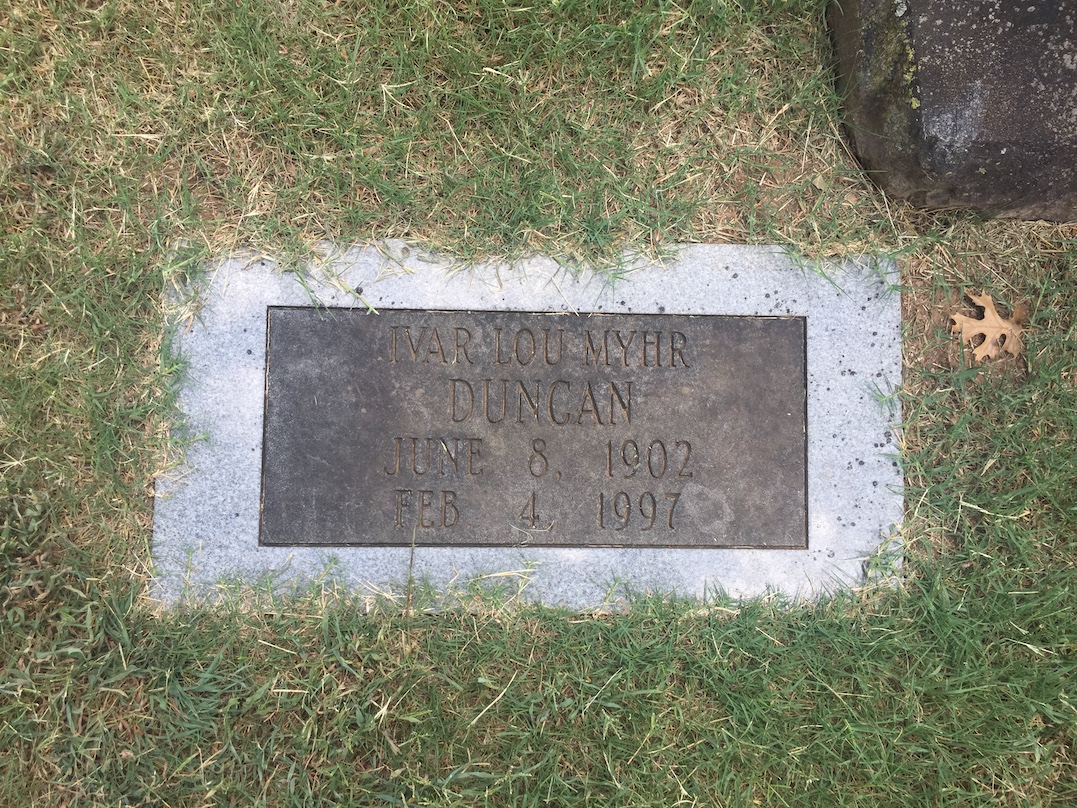
Ivar Lou Myhr Duncan
June 8, 1902
February 4, 1997
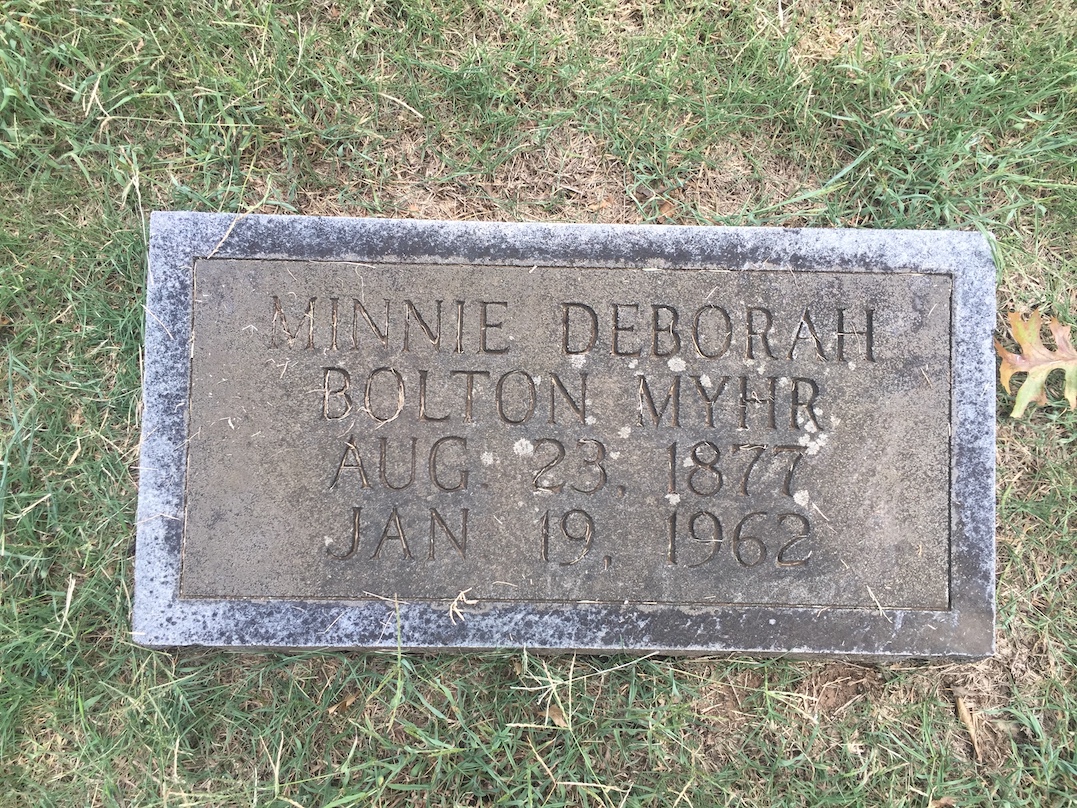
Minnie Deborah Bolton Myhr
August 23, 1877
January 19, 1962
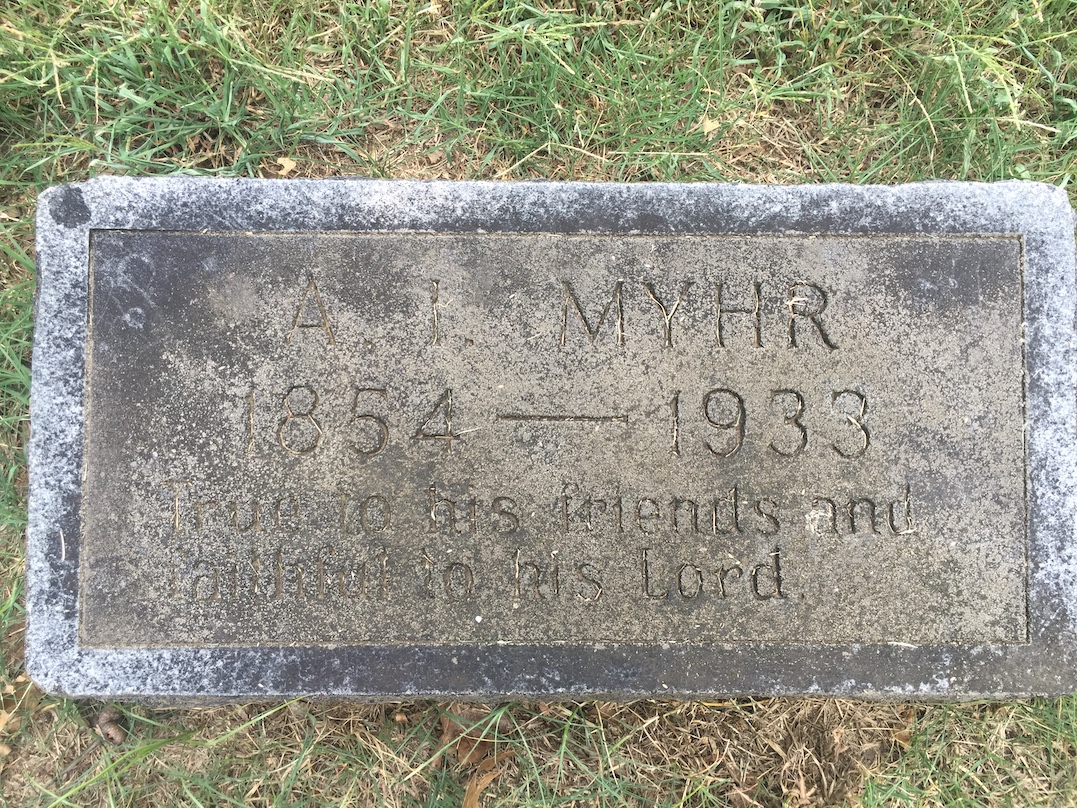
A.I. Myhr
1854-1933
True to his friends and
faithful to his Lord
![]()
Photos Taken 09.06.2018
Webpage produced 12.28.2019
Courtesy Of Scott Harp
www.TheRestorationMovement.com
![]()
